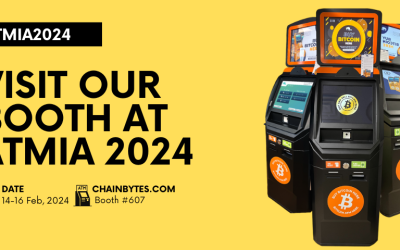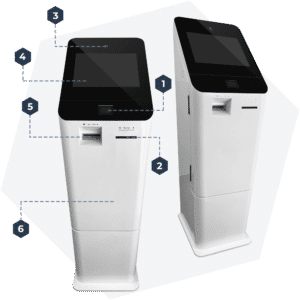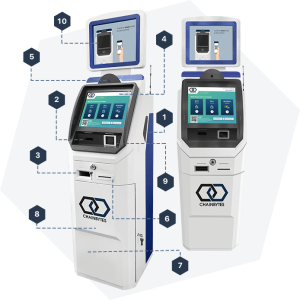Bitcoin is fast becoming a precious store of value for millions of people around the world. By design, bitcoin consumes a significant amount of electricity. This energy is consumed as a part of the process required to validate and add transactions to bitcoin’s blockchain. Critics often decry that bitcoin uses too much energy and, as a result, produces an excessive carbon footprint.
Bitcoin’s energy use is an important issue, and it is not being ignored by the bitcoin community.
The energy-intensive process of validating bitcoin transactions is called “mining”, and it is the digital equivalent to physical mining of gold or other precious metals. In order to understand this better, let’s take a look at how bitcoin mining works.
Bitcoin Mining
Transactions of bitcoin need to be validated in order to be recorded on the bitcoin blockchain. The bitcoin blockchain is a decentralized and distributed database that records and verifies data.
- Miners use computing resources to discover a cryptographic number called a “nonce” (i.e. number used once).
- The nonce is generated by the bitcoin software using a hash function.
- All the miners then run computations to try to find the nonce.
- This becomes a contest to determine which miner can discover the number first.
- Once the nonce is found, the miners come to an agreement about who discovered it first.
- The winning miner is paid a reward in bitcoin and is permitted to add a block of transactions to the blockchain.
Miners gain an advantage in the race to discover the nonce by utilizing special computing devices called ASICs (i.e. Application-Specific Integrated Circuits), which can compute the large sets of numbers required to discover the nonce. ASICs are rated in the number of hashes they can compute per second. This is called the hashrate. Miners who run pools of ASICs have a higher probability of discovering the nonce because the higher resulting hashrate gives them more hash power. Bitcoin mining is required to validate transactions into blocks and produce bitcoin as a reward for miners. This process is called the Proof-of-Work (PoW) consensus mechanism.
While it seems like all the miners are doing is computing numbers, it is actually an energy intensive task that uses up a lot of electricity. When more miners are involved in the network, the bitcoin software automatically adjusts the difficulty level required to solve the nonce. This leads to even more electricity being consumed.
Energy Intensive by Design
Bitcoin’s high energy consumption is intentional and was built into bitcoin for a reason. Bitcoin’s network is decentralized so that no single node can have control. If a bad actor wanted to take over the network, they would have to expend more energy than the rest of the miners, which would come at an extreme cost.
- A 51% attack – or someone attempting to take over a majority of the network hashrate – could potentially permit reversing transactions which, in theory, could lead to control of the network.
- In reality, such an attack is implausible because the amount of energy required would be so costly.
- Unless the attacker had infinite resources, they are more likely to go bankrupt before ever controlling the network.
- Other miners could also see the attack in advance and “fork” or redirect the blockchain leaving the attacker with a network that has no value.
- These built-in defenses discourage malicious behavior and make it more lucrative to legitimately mine than attack the network.
To gain an advantage, miners prefer to set up their operations in places where electricity is cheap. These are usually areas where there is an abundance of energy, but less overall demand. This maximizes profits for miners while minimizing the cost of electricity.
Countries like China and Russia became popular as mining destinations because the cost of electricity per KW/h was cheaper than in other places. Some miners have also been attracted by governments willing to artificially reduce the price charged for energy. However, despite the price of energy being cheaper, if the energy comes from fossil fuels like coal, it can be bad for the environment.
Environmental and Sustainability Issues
According to 2016 data from The University of Cambridge – Cambridge Bitcoin Electricity Consumption Index, bitcoin mining uses a total of 123.77 TWh/y (Tera-Watt Hours per year). If it were a country, that would make bitcoin, as an energy consumer, ranked 31st in the world. This quantity of electricity is about equal to the amount used by Norway (124.13 TWh/y) and exceeds smaller nations like Singapore (47.58 TWh/y). These are staggering figures. As bitcoin becomes more utilized and its popularity grows, the amount of energy consumed will further increase.
- Some reports suggest that most of the energy being used to mine bitcoin comes from fossil fuel sources.
- But this fact is true for almost all industries today as the industrial, transportation, and manufacturing sectors all heavily rely on fossil fuels.
- Fossil fuel energy use is not something that can be entirely reversed at the moment due to the massive scale of these sectors.
- Currently, bitcoin has a much smaller carbon footprint when compared to the above industries.
According to the same University of Cambridge study, bitcoin uses up 0.57% of the world’s total electricity consumed in a year. That is still far less than other industries by comparison. Even if bitcoin did not consume as much energy as other sectors of the economy, there is still the need to become more efficient and reduce its carbon footprint.
A key issue with bitcoin mining is the matter of sustainability. This has been brought forward by ESG (Envrionmental, Social, Governance) concerns from institutional investors. The main concern is that as more users adopt bitcoin, the amount of energy consumed is also likely to increase which would lead to a higher carbon footprint.
Other criticism surrounds the use of ASICs employed in Bitcoin mining. ASICs contain hazardous waste from electronic components and must be disposed of properly. If there is no guidance on how to dispose of ASICs, the concern is miners may dispose of them improperly. Doing so can be harmful to the environment and human health. As bitcoin grows, it will lead to more demand for ASICs. This can put pressure on manufacturers to produce more and may increase emissions. This is especially true if ASIC production is fossil fuel based.
What does a greener direction for bitcoin look like?
The bitcoin community is aware of the current impact mining has on the environment and understands that sustainable and renewable sources of energy are the right choice for the future.
- Greener technologies are already available that reduce mining costs and increase efficiency.
- Right now, it’s estimated the 40% – 76% of miners use renewable energy in their operations.
- Increasingly, miners are seeking out sources of electricity that would otherwise go to waste or not be transmissible.
- More and more, miners are also establishing operations in places where primary energy sources are derived from renewable energy.
- Other mining operations are making use of clean and sustainable energy from geothermal energy, hydropower, and even volcanoes.
These renewable alternatives are proving to be both less costly and more sustainable for bitcoin miners. Through such initiatives, we can successfully address bitcoin’s energy requirements, maintain its utility as a store of value, and avoid increasing risk to the environment.
Follow us on Social Media:
In the meantime, you can follow us on our channels, visit our website, or call us directly!
Check out our website, https://www.chainbytes.com
Give us a call! +1 (415) 529-5777 or shoot us an email.
Related News
Exploring Opportunities: Starting and Growing Your Bitcoin ATM Business
In the rapidly evolving landscape of cryptocurrencies, venturing into the Bitcoin ATM business is an exciting opportunity for entrepreneurs. As digital currencies continue to gain mainstream acceptance, the demand for accessible and user-friendly avenues to purchase...
How To Start And Market a Bitcoin ATM Business In 2024
Are you intrigued by the idea of entering the cryptocurrency market? Have you considered starting a Bitcoin ATM business but feel unsure about where to begin? We'll go over all the steps you need to take to open and sell a Bitcoin ATM business in 2024 in this...
Join ChainBytes at ATMIA Conference 2024
The annual ATMIA conference will take place in Las Vegas on February 14-16. Get ready to embark on an exhilarating journey into the heart of the automated banking industry at the highly anticipated ATMIA (ATM Industry Association) Conference 2024! This annual event...






